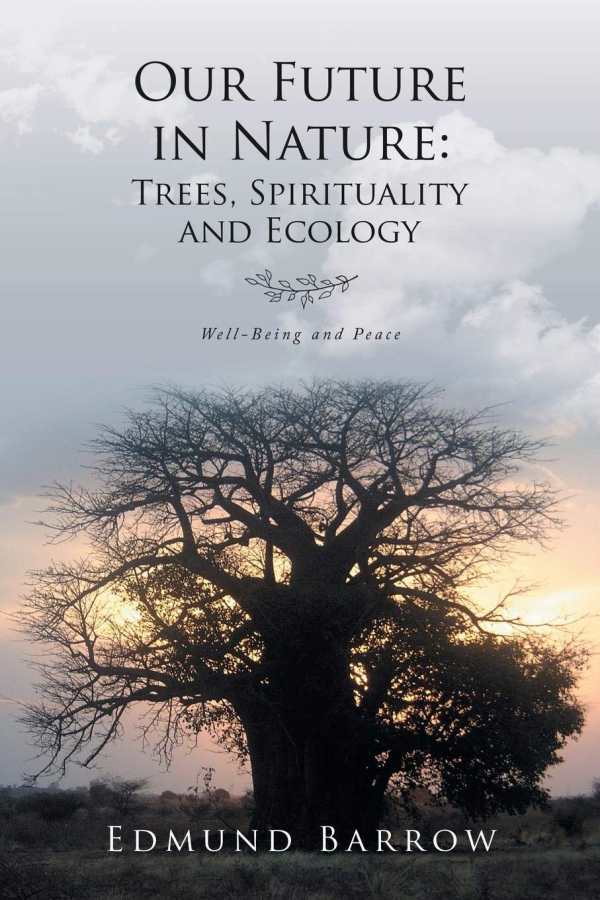
Our Future in Nature
Trees, Spirituality, and Ecology: Well-Being and Peace
Our Future in Nature is a timely, innovative, and insightful book that bridges gaps between science and spirituality.
Edmund Barrow’s Our Future in Nature forwards a worldview in which all of nature is sacred and worthy of respect.
Focusing on the world’s sacred trees and groves, their historical significance, and their potential role in bridging the gaps between humanity and nature, the book uses arguments bolstered by science, history, and lived experience to declare that “sustainable growth” is an oxymoron. Refreshing and insightful, it provides an alternate perspective from which to draw solutions to today’s ecological crisis.
Tracing how sacred trees and groves have been part of all spiritual and religious traditions throughout history, the book declares that their ability to inspire peace, stillness, and mindfulness remains potent today. It demonstrates how and why they, along with their associated ecosystems and human communities, are threatened and affirms their importance in bringing people with diverse perspectives together to listen, learn, and work on behalf of the planet.
Countering the worldviews of governments, industries, and businesses that prioritize development, the book argues against the greed, racism, and patriarchy that underlie such development. It takes issue with human dominance over nature, declaring that much is lost when such perspectives are pursued. The text is passionate and compelling and includes surprising and little-known facts about trees, including their 370-million-year evolutionary history and the amazing lifespans that some individuals and species have attained (the Ginkgo biloba, Barrow reveals, has existed for 270 million years).
The book’s suggestions for interacting with sacred trees and groves are practical and engaging, ranging from mindset and policy changes to planting and nurturing trees to declaring a particular grove or tree sacred and honoring it as such. Affirmations that minds and hearts can be opened through such interactions with nature, and that those so awakened can become part of the solution to the planet’s problems, are inspiring. It also makes a convincing argument that recognizing and protecting the trees and groves that are sacred to Indigenous people worldwide can not only aid in the survival of these precious and diverse ecosystems, but of the cultures that maintain them.
Deep and extensive research underlies the narrative, and the tone of its delivery is conversational yet pointed. The narrative is repetitive, however; similar problems and solutions are encountered in many different locations. The book becomes unwieldy in its attempt to present a great wealth of information and make cogent arguments around it; it jumps from one topic, location, and grove to another as it tries to include them all, creating a disjointed reading experience.
The inclusion of succinct and easy-to-read charts ameliorates this effect by condensing material that otherwise would require lengthy narrative. For example, a three-column chart explains the distinctions between the terms “religious,” “spiritual,” and “sacred”; other complex items are handled well in charts, too. Human interest stories and deeper dives into topics are presented in appealing boxes with colored borders.
In-text citations are so numerous that they distract from the material. Identifying the subjects of the book’s black-and-white photographs requires interruptive page-flipping, as they are only labeled at the beginning. Grammatical errors include the misuse of commas; missing, extra, and misused words; a sentence that seems to state the reverse of its intended meaning and others that are unclear; and spelling and capitalization errors.
Our Future in Nature is a timely, innovative, and insightful book that bridges gaps between science and spirituality with its argument that conservation is a “spiritual imperative.”
Reviewed by
Kristine Morris
Disclosure: This article is not an endorsement, but a review. The publisher of this book provided free copies of the book and paid a small fee to have their book reviewed by a professional reviewer. Foreword Reviews and Clarion Reviews make no guarantee that the publisher will receive a positive review. Foreword Magazine, Inc. is disclosing this in accordance with the Federal Trade Commission’s 16 CFR, Part 255.
